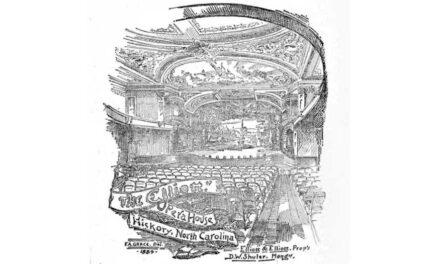
How did North Carolina become a bastion for pirates. As with most everything in the Old North State, it has to do with the land. Since the Outer Banks hampered the establishment of a deep water port, the earliest settlers chose to opt for Norfolk to the north or Charleston to the south as alternatives. Meanwhile, what became North Carolina was sparsely settled as a result. Down east, the sounds were shallow. Careful navigation was essential so that a ship did not run aground, and still it happened quite often.
Because of that geography, the people who did settle in what became NC found themselves out of the way and largely ignored by colonial society, which is just the way they wanted it. Think of it as a place to hide, a perfect location for laying low, especially if your are involved in piracy.
In those days, the job of taking from others was state sanctioned. For much of the 16th century, the English government was doing it regularly, primarily as a way to even the odds in Europe. Queen Elizabeth I went into business with a number of “sea dogs” as they were called, encouraging them to board the ships of other nations (Spain primarily) and take their stuff. The polite term for the practice was called privateering. When exploration in the New World found gold and the Spanish were hauling it back to the mother country, commanders like Sir Humphrey Gilbert or Sir John Hawkins would attack, board the vessels and take whatever they chose. Even Sir Walter Raleigh was in the business.
So life as a pirate became an attractive career choice. What the queen may not have considered was that a few might go into business for themselves. Stede Bonnet was a British subject, the son of a wealthy landowner in Barbados. When he inherited the family fortune, Stede got tired of living a cushy, though boring life. He knew nothing about sailing, or stealing but decided that he wanted to become a pirate.
With nothing but money to back him, he commissioned the building of his own sloop, which he name Revenge. He paid a crew regular wages (instead of a share of the loot) and set sail. According to legend, Stede undertook the role of pirate because of his lack of domestic bliss. In other words, he did it to get away from his wife. He left to see what a life of plunder felt like. A wound from an encounter with a Spanish man-o-war gave him his bonafides and the “Gentleman Pirate” as he was known, ventured off to lay waste upon the high seas from Delaware to the Carolinas.
He had a good, but short run. He raided or took part in raids of over 30 ships. While hiding out in Bath, North Carolina he was captured but got a pardon from the NC governor if he would give up pirating. He vowed to do so, but by then the lure of pillaging was too much. He became such a menace that the governor of South Carolina sent a fleet to get him in North Carolina. Captured on the Cape Fear River, he escaped only to be captured again. After 18 eventful months he was hanged for his efforts, though he begged the governor of SC to cut off his ams and legs instead to make sure he’d never rob another ship again.
Most recently, Stede Bonnet’s story has been the comic subject of an HBO series, Our Flag Means Death, that follows his historical path fairly close. It also recounts his brief partnership with a more famous pirate, Blackbeard.
Photo: An engraving of Stede Bonnet, made six years after his execution and his portrayal in the 21st century.








